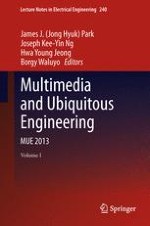2013 | OriginalPaper | Chapter
Edit Distance Comparison Confidence Measure for Speech Recognition
Authors : Dawid Skurzok, Bartosz Ziółko
Published in: Multimedia and Ubiquitous Engineering
Publisher: Springer Netherlands
Activate our intelligent search to find suitable subject content or patents.
Select sections of text to find matching patents with Artificial Intelligence. powered by
Select sections of text to find additional relevant content using AI-assisted search. powered by
